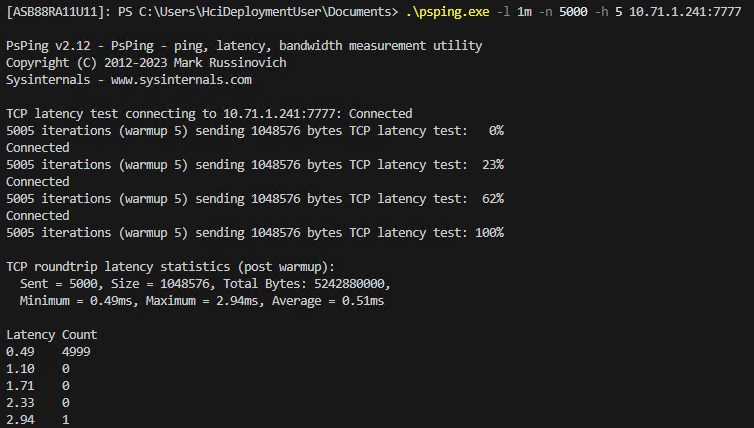Note
Access to this page requires authorization. You can try signing in or changing directories.
Access to this page requires authorization. You can try changing directories.
Applies to: Azure Local version 2510 and later
This article describes the preparation steps to deploy Azure Local rack aware clusters. It includes network design recommendations, machine configuration guidelines, and best practices for deployment.
Important
This feature is currently in PREVIEW. See the Supplemental Terms of Use for Microsoft Azure Previews for legal terms that apply to Azure features that are in beta, preview, or otherwise not yet released into general availability.
Review supported network configurations
Make sure to review the Network design requirements for Azure Local rack aware clusters for detailed design and supported network configurations.
- We strongly recommend that you deploy two Top-of-Rack (ToR) switches in each rack or room to ensure high resiliency.
- For edge implementations where cost efficiency is a priority, a single ToR switch per room or rack might be sufficient, provided that adequate bandwidth is available. Both storage networks reside on the same device and are isolated through distinct VLANs.
Make sure your network switches support Link Layer Discovery Protocol (LLDP) and that LLDP is enabled on all switch ports connected to the Azure Local machines. This is crucial for the LLDP Network Validator test, which verifies the network topology and connections for your rack aware cluster deployment.
Register cluster nodes
Make sure you register the Azure Local machines that you intend to use in the rack aware cluster. Follow the steps detailed in the Register Azure Local machines with Azure Arc.
Verify that the Azure Local machines show in the resource group as registered.
Test rack-to-rack latency
To validate rack-to-rack (room-to-room) network latency through a client-server testing model, use the psping tool.
To ensure accurate and complete testing, we recommend that you run full mesh tests. This implies that every host tests connectivity with every other host in both directions.
Server: This machine listens for the incoming test traffic.
Client: This machine initiates the test to measure latency.
Each host takes turns acting as both server and client when testing against other hosts.
Follow these steps to test rack-to-rack latency:
Download
pspingand extract it on each host that participates in testing.Allow TCP traffic through the firewall. Since this test uses TCP, ensure the port is open on the server. Run this command:
New-NetFirewallRule -DisplayName "\<RULENAME\>" -Direction Inbound -Protocol TCP -LocalPort \<PORT\> -Action Allow -Enabled True -ErrorAction StopStart the
pspingserver on one host. Run this command:.\psping.exe -s \<SERVER_IP\>:\<PORT\>Run the
pspingclient on another host. Run this command:.\psping.exe -l 1m -n 5000 -h 5 \<SERVER_IP\>:\<PORT\>Review output analysis: After the test is complete,
pspingprovides a summary and a histogram of latency values. This analysis helps evaluate performance more effectively.Average latency: To understand the overall network delay, use this key metric.
Histogram: To see a clear picture of how consistent the latency is across all the test packets, use this metric.
Latency example
In this example, the average latency is 0.51 ms which is less than 1 ms.
To complete the full mesh testing, repeat steps 3 and 4 with different server-client combinations until every host is tested with every other host.
Note
Results can vary depending on when you run the test, as TCP latency is affected by your current network conditions. We strongly recommend that you run the test multiple times to get a reliable average.
Run the LLDP Network Validator test for rack aware clusters
Use the LLDP Network Validator Test to validate the network topology and connections for your rack aware cluster deployment. This test helps ensure that your network configuration meets the requirements for a successful rack aware cluster deployment.
For more information, see Run the LLDP Network Validator test for rack aware clusters.
Next steps
Proceed to deploy your rack aware cluster by following the steps in:
